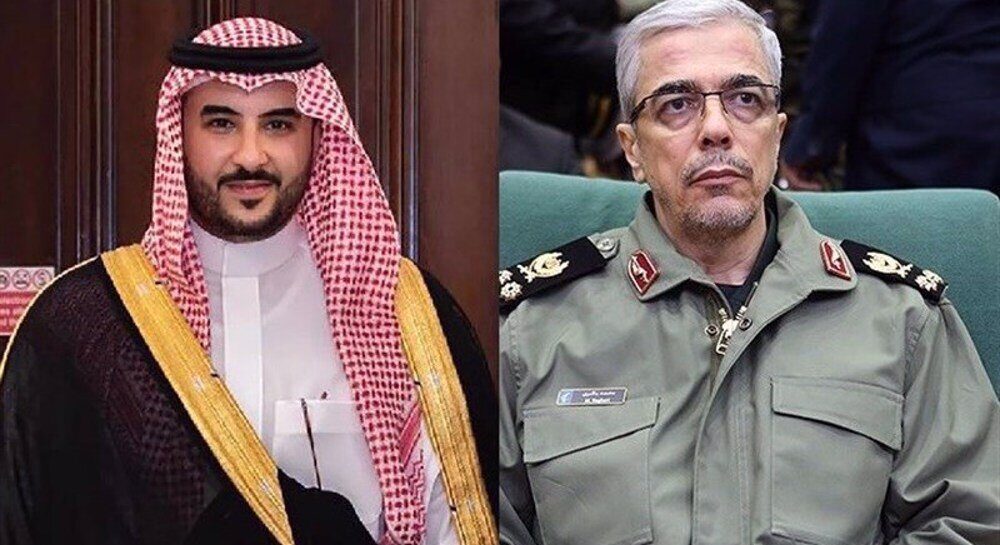Saudi Crown Prince and Iranian President Discuss Regional Developments
In a major step toward easing tensions in the Middle East, Saudi Arabia’s Crown Prince Mohammed bin Salman and Iran’s President Ebrahim Raisi held a high-level discussion on Thursday, April 4, focusing on regional developments, particularly the ongoing situation in Gaza, economic cooperation, and regional security.
The conversation highlights a growing willingness between the two rival powers to move beyond decades of mistrust. It also reflects their shared understanding that stability in the region depends on open communication, economic cooperation, and unity in the face of common challenges.
A Renewed Commitment to Dialogue
Relations between Saudi Arabia and Iran have seen a cautious but steady improvement since the two countries restored diplomatic ties in 2023, ending a seven-year diplomatic rift. The re-establishment of embassies in Riyadh and Tehran signaled a turning point after years of proxy conflicts and political tension.
This latest discussion is viewed as part of broader efforts by both governments to maintain momentum in rebuilding trust. It comes at a time when the Middle East is dealing with several crises, and both countries are recognizing the importance of collective efforts over confrontation.
According to sources close to the matter, both leaders expressed their intention to continue dialogue on a regular basis and avoid actions that could escalate regional tensions.
Addressing the Gaza Conflict and Humanitarian Crisis
One of the central issues raised during the talks was the ongoing conflict in Gaza. With rising civilian casualties and humanitarian needs, both leaders emphasized the urgent need for de-escalation and a return to peace talks.
Crown Prince Mohammed bin Salman reaffirmed Saudi Arabia’s strong support for the Palestinian people. He called for the protection of civilians, the opening of humanitarian corridors, and a halt to military operations that target residential areas.
President Raisi echoed these concerns and stressed the need for Islamic nations to unite and act decisively to defend Palestinian rights. He criticized what he described as the international community’s failure to stop the bloodshed, and proposed stronger coordination among Muslim countries through the Organization of Islamic Cooperation (OIC).
Both leaders reportedly agreed on the need for a lasting solution to the Palestinian issue based on international law and the Arab Peace Initiative.
Exploring Economic Opportunities Together
Beyond political and security matters, the Saudi-Iranian conversation also touched on potential economic partnerships. As two of the most influential energy producers in the region, both countries see value in cooperating more closely on oil production, market stability, and renewable energy development.
Saudi Arabia and Iran are both members of OPEC, and their cooperation within the group is essential for maintaining balanced oil prices globally. Sources suggest the leaders discussed future coordination on oil output strategies and stabilizing energy markets, especially during times of global uncertainty.
They also explored opportunities for joint ventures in clean energy, including solar and hydrogen technologies, which align with both nations’ long-term economic visions—Saudi Vision 2030 and Iran’s 7th Development Plan.
This economic angle adds a layer of mutual benefit to the political dialogue and may pave the way for more tangible cooperation in the future.
A Changing Geopolitical Landscape
The Middle East is witnessing a shift in alliances and priorities. The gradual drawdown of Western involvement in the region has pushed countries to take more ownership of regional security and diplomacy.
Saudi Arabia and Iran, often seen on opposite sides of regional conflicts, now appear to be embracing a new model—one based on regional solutions, not external intervention. By holding direct talks, the two powers signal a readiness to resolve differences through diplomacy instead of proxy confrontations.
This new approach is in line with broader efforts by Gulf countries to reduce tensions and increase regional integration. Recent peace deals, normalization talks, and multi-lateral forums point to a Middle East that is slowly moving toward cooperation rather than confrontation.
International Reactions
The global response to the talks has been largely positive. The United Nations welcomed the move, with Secretary-General António Guterres calling it “a vital example of regional dialogue in action.”
Analysts see the talks as a strategic effort by both Riyadh and Tehran to demonstrate leadership at a time when their region faces wars, humanitarian crises, and economic uncertainty.
Washington, while maintaining strong ties with Riyadh, has also supported the Saudi-Iranian dialogue as a stabilizing factor. China, which brokered the 2023 Saudi-Iran normalization deal, is likely to view the latest talks as a win for its diplomatic influence in the region.
Looking to the Future
While it is too early to predict how far this new chapter in Saudi-Iranian relations will go, the current developments are promising. History and deep-rooted political differences still present challenges. However, regular communication, shared economic interests, and mutual concern over regional stability provide a solid foundation for future cooperation.
As the Middle East continues to navigate a rapidly changing landscape, partnerships like this could define a new era of diplomacy. If sustained, the engagement between Saudi Arabia and Iran may offer a roadmap for resolving other regional conflicts and boosting collective prosperity.
The world will be watching closely to see whether words turn into actions—and whether these two powerful nations can truly lead the region toward peace.
Do follow gulf magazine on Instagram
for more information click here


